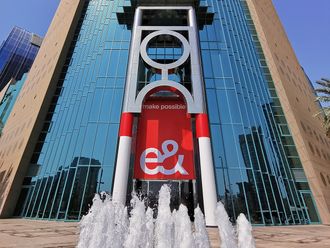London: The Opec oil producers cartel will hold one of its toughest and most significant meetings in recent years as, faced with sliding prices, its members must contemplate whether to cut output.
Ahead of Thursday’s meeting of the Organisation of Petroleum Exporting Countries in Vienna, home to the cartel’s headquarters, its dozen member countries are split on what direction to take after a 30 per cent drop in crude prices since June has slashed revenues.
OPEC’s poorer members, led by Venezuela and Ecuador, have called publicly for a cut in output, while Iran has hinted at a need to reduce production.
But the cartel’s Gulf members, led by kingpin Saudi Arabia, are rejecting calls to pump out less oil unless they are guaranteed market share in the highly competitive arena, according to analysts.
Separately, Russia — which is not a member of Opec but is nevertheless a major crude producer — declared Friday that it was considering cutting its oil production in a bid to revive falling prices.
Opec produces about one third of global crude at more than 30 million barrels per day.
According to the International Energy Agency, which advises on energy policy, Opec pumped out 30.6 million barrels per day in October — above its 30 million bpd target.
“The next meeting of the Organisation of Petroleum Exporting Countries ... should be the most interesting since the change from individual quotas to a group target in early 2012,” said Tom Pugh, an analyst at Capital Economics research group.
“The key driver [behind tumbling prices] has been increasing supply, although other triggers for Brent’s slump from $115 in June have included weak demand, particularly from Europe and China, and the strength of the US dollar. The decline has probably also been compounded by panic selling by producers and investors.”
On Friday, the price of benchmark Brent North crude oil traded at $79.56 a barrel.
Rather than cut its official output ceiling, Opec could decide to reduce the amount it is overproducing.
“The minimum consensus that appears likely to be reached at OPEC’s meeting is a commitment to better comply with the official production target of 30 million barrels per day,” Commerzbank analysts said in a note to clients.
Increasing competition
Ahead of the meeting, the world’s top oil producer Saudi Arabia has cut what it charges US customers, in a move seen aimed at maintaining its market share as it is faced with increasing competition from oil extracted from shale rock in the United States.
Pugh said that “any cut in the cartel’s production target will simply be as a response to lower demand for its oil, rather than a concerted attempt to push up prices”.
Faced with surging US output — crude production in the world’s biggest economy is set to hit a 45-year high of 9.5 million barrels a day in 2015 — Venezuela has called for a meeting of Opec and non-OPEC countries to address the slide in oil prices.
Venezuela depends on crude exports for 96 per cent of its foreign currency, and the price crunch has added to the headaches of a government struggling to halt rampant inflation and ease severe shortages of food and medicine.
“What is for certain is that the price is currently trying to find a new equilibrium after a number of years with crude oil trading above 100 dollars,” said Saxo Bank analyst Ole Hansen.
“High prices were primarily driven by a rapid increase in demand from emerging economies and as a result of high prices we saw the emergence of new sources of supply, not least shale oil.”












